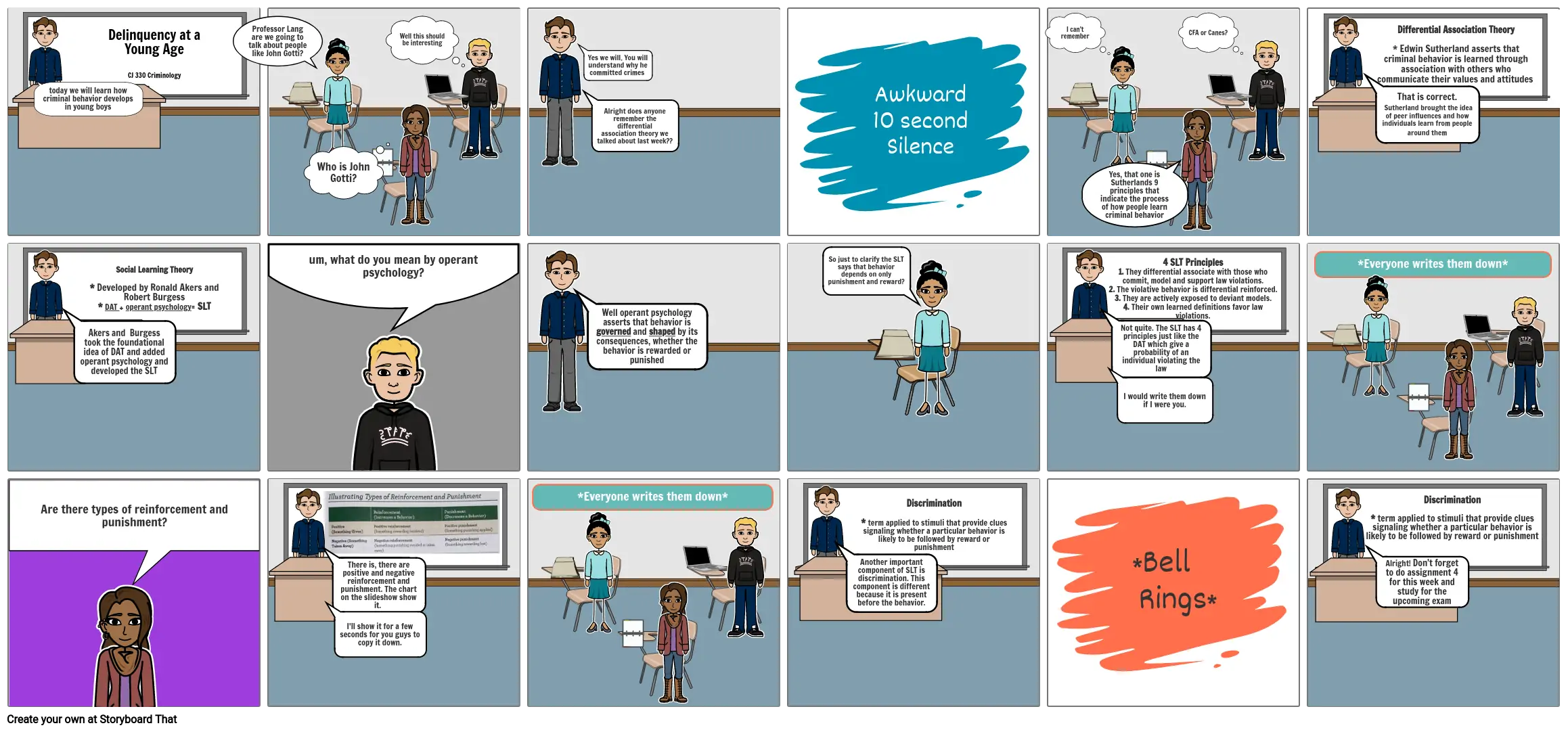criminology board john Gotti

Storyboard Text
- today we will learn how criminal behavior develops in young boys
- Delinquency at a Young AgeCJ 330 Criminology
- Professor Lang are we going to talk about people like John Gotti?
- Who is John Gotti?
- Well this should be interesting
- Yes we will. You will understand why he committed crimes
- Alright does anyone remember the differential association theory we talked about last week??
- Awkward 10 second Silence
- I can't remember
- Yes, that one is Sutherlands 9 principles that indicate the process of how people learn criminal behavior
- CFA or Canes?
- That is correct. Sutherland brought the idea of peer influences and how individuals learn from people around them
- Differential Association Theory* Edwin Sutherland asserts that criminal behavior is learned through association with others who communicate their values and attitudes
- Akers and Burgess took the foundational idea of DAT and added operant psychology and developed the SLT
- Social Learning Theory* Developed by Ronald Akers and Robert Burgess* DAT + operant psychology= SLT
- um, what do you mean by operant psychology?
- Well operant psychology asserts that behavior is governed and shaped by its consequences, whether the behavior is rewarded or punished
- So just to clarify the SLT says that behavior depends on only punishment and reward?
- Not quite. The SLT has 4 principles just like the DAT which give a probability of an individual violating the law
- 4 SLT Principles1. They differential associate with those who commit, model and support law violations.2. The violative behavior is differential reinforced.3. They are actively exposed to deviant models.4. Their own learned definitions favor law violations.
- I would write them down if I were you.
-
- *Everyone writes them down*
- Are there types of reinforcement and punishment?
- There is, there are positive and negative reinforcement and punishment. The chart on the slideshow show it.
- I'll show it for a few seconds for you guys to copy it down.
- *Everyone writes them down*
- Another important component of SLT is discrimination. This component is different because it is present before the behavior.
- Discrimination* term applied to stimuli that provide clues signaling whether a particular behavior is likely to be followed by reward or punishment
- *Bell Rings*
- Alright! Don't forget to do assignment 4 for this week and study for the upcoming exam
- Discrimination* term applied to stimuli that provide clues signaling whether a particular behavior is likely to be followed by reward or punishment
Over 30 Million Storyboards Created
No Downloads, No Credit Card, and No Login Needed to Try!
